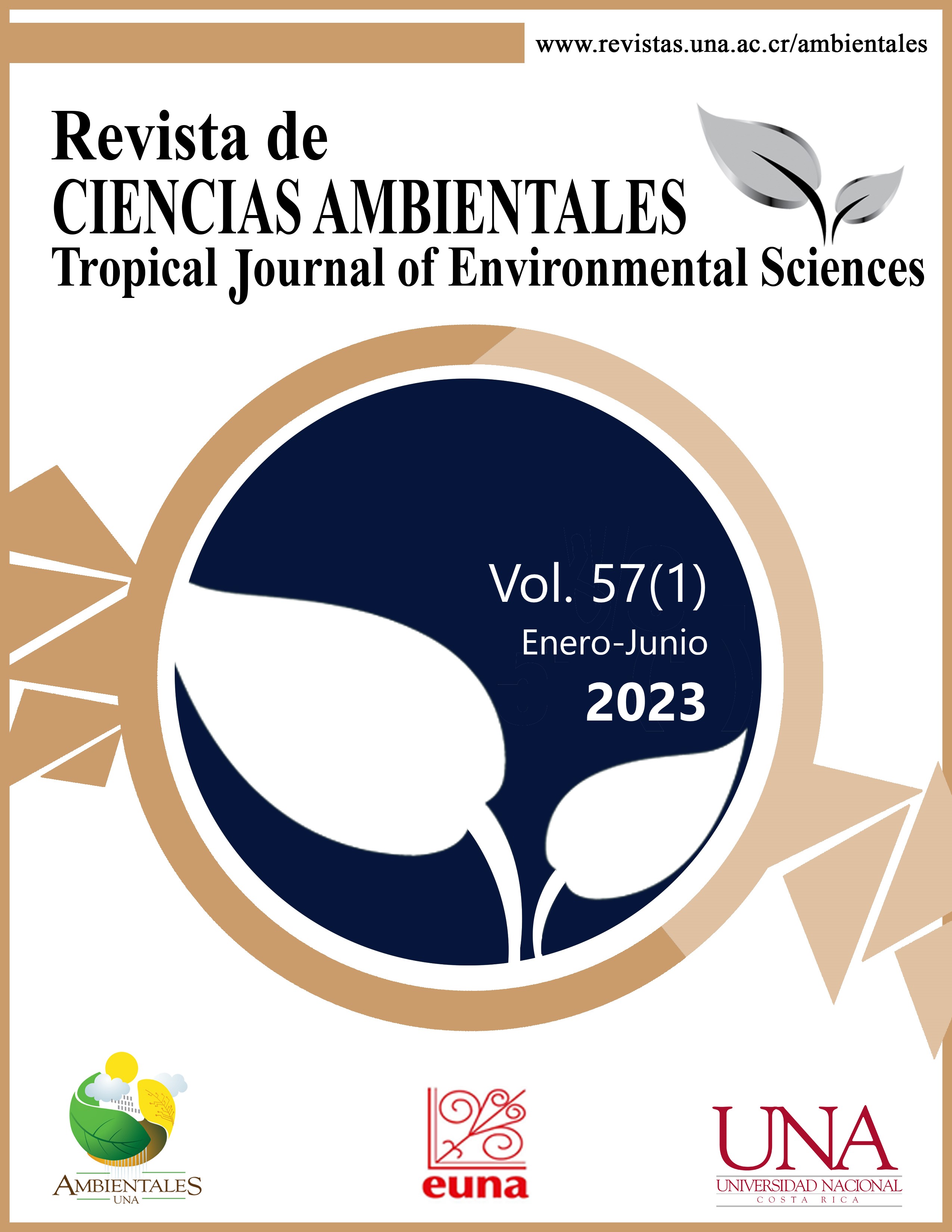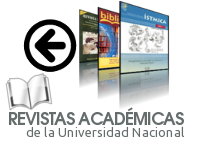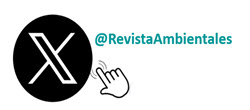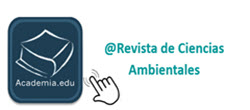Um projeto abrangente para a pesquisa e conservação de preguiças em plantações de cacau na Costa Rica
DOI:
https://doi.org/10.15359/rca.57-1.3Palavras-chave:
Demografia; dispersão; genética; medicina de conservação; promiscuidade.Resumo
A preguiça de dois dedos (Choloepus hoffmanni) e a preguiça de três dedos (Bradypus variegatus), hoje consideradas símbolos nacionais da Costa Rica, foram estudadas por 13 anos (2004-2016) em uma fazenda de cacau e seus arredores dentro do projeto “Theobroma cacau: Biodiversidade nas copas florestais totais e parciais”. Investigações interinstitucionais e interdisciplinares foram conduzidas por seis departamentos de cinco instituições e abordaram os seguintes tópicos: a) ecologia espacial, b) comportamento, c) saúde da vida selvagem, d) demografia, e) genética e f) conservação. Isso resultou em 26 publicações científicas, a maioria com novas informações; alguns estão resumidos neste artigo. A conservação das preguiças dependerá de uma variedade de componentes, incluindo: i) proteção e regeneração do habitat onde vivem e transitam, especialmente plantações de cacau, matas ciliares, cercas vivas e árvores em pastagens, ii) programas de educação ambiental, iii) evitar extrair e vender preguiças para centros de resgate e zoológicos privados, e iv) dar continuidade aos programas de pesquisa e monitoramento.
Referências
Arnold S., Keller D., Stanton N., & Sladky, K. (en revisión). Sloths as sentinels of ecosystem health: Evaluation of agricultural pesticides in plasma of free-ranging Hoffmann’s two-toed (Choloepus hoffmanni) and brown-throated three-toed (Bradypus variegatus) sloths. Journal of Zoo and Wildlife Medicine.
Costa Rica, Asamblea Legislativa. (2021). Expediente N.º 22.167.
Escobar, B. y Sagastume, K. (2017). Plan de Conservación 2018 - 2025 Perezoso de tres dedos (Bradypus variegatus) en FINMAC, Guápiles, Costa Rica. Instituto Internacional en Manejo y Conservación de Vida Silvestre, Universidad Nacional, Costa Rica.
Estrada, A., Jiménez., de Oliveira., Sterner., Meneses., Hernández, J., Murphy, P., Sladky. & Vaughan, C. (en revisión). Parásitos de Bradypus variegatus y Choloepus hoffmanni (Xenarthra: Bradypodidae y Megalonychidae) en vida libre en Guácimo, Limón.
Garces-Restrepo, M., Peery Z., & Pauli, J. (2019). The demography of a resource specialist in the tropics: Cecropia trees and the fitness of three-toed sloths. Proc. R. Soc. B 286, 20182206.http://dx.doi.org/10.1098/rspb.2018.2206
Garcés-Restrepo M., & Pauli J. Peery, Z. (2018). Natal dispersal of tree sloths in a human dominated landscape: Implications for tropical biodiversity conservation. J Appl Ecol., 55, 2253–2262. https://doi.org/10.1111/1365-2664.13138
Garces-Restrepo, M., Peery, Z., Reid, B., & Pauli, J. (2017). Individual reproductive strategies shape the mating system of tree sloths. Journal of Mammalogy, 98,1417-1425. https://doi.org/10.1093/jmammal/gyx094
Hagnauer, I. (2016). Determinación de valores referenciales de la hematología y química plasmática en una población de las especies perezosos de las especies Choloepus hoffmanni y Bradypus variegatus de vida libre en la zona de San José de Upala, Alajuela [Tesis de licenciatura., Escuela de Medicina Veterinaria, Universidad Nacional, Costa Rica].
Handley, C., Siudak-Campfield, J., Paul-Murphy, J., Vaughan, C., Ramirez, O., Keuler, N., & Sladky, K. (2008). Immovilization of free-ranging Hoffmann’s two-toed sand Brown-throated Three-toed sloths using ketamine and medetominidine: A comparison of physiologic parameters. Journal of Wildlife Diseases, 44(4), 938-945. https://doi.org/10.7589/0090-3558-44.4.938
Herrera-Valverde, G. (2021). Investigación y conservación de osos perezosos en Pueblo Nuevo de Guácimo. En O. Monge-Solano y G. Gutiérrez-Espeleta (Eds.), Reproducción en cautiverio y liberación de fauna silvestre en Costa Rica (pp. 67-71). Editorial de la Universidad de Costa Rica.
Holdridge, L. (1964). Life zone ecology. Tropical Science Center.
International Union for Conservation of Nature. (2013). Guidelines for Reintroductions and Other Conservation Translocations. Gland, IUCN-SSC.
Jiménez, M., Estrada, A. C., de Oliveira, J., Blanco, K., Meneses, A., Ramírez, O., Vaughan, C., Murphy, J.P., Sladky, K., Siuda, A., Handley, C., Morales, C., & Herrera, G. (2008). Preliminary results in an interdisciplinary study in a sloth population in Costa Rica. European Association of Zoo and Wildlife Veterinarians, 7th Scientific Meeting, April 30 - May 3. Leipzig, Germany.
Kinney, M., Cole, G., Vaughan, C y K. Sladky. (2013). Physiologic and serum biochemistry values in free-ranging Hoffmann’s two-toed (Choloepus hoffmanni) and brown-throated three-toed (Bradypus variegates) sloths immobilized using dexmedetomidine and ketamine. Journal Zoo and Wildlife Medicine, 44(3), 570–580. https://doi.org/10.1638/2012-0040R1.1
La Nación, 2 de julio (2021). El perezoso da un salta para convertirse en símbolo nacional. https://www.nacion.com/el-pais/politica/el-perezoso-da-un-salto-para-convertirse-en/2I74J47UGZEYRIZEVV3OA3G4ZE/story/
La Nación. (2019). Un árbol prolonga la vida del perezoso de tres dedos. Costa Rica, https://www.nacion.com/ciencia/medio-ambiente/un-arbol-guardaria-la-clave-para-que-perezosos-de/OTM2QH6X25B2PBYDZAV77U4BDA/story/
La Nación. 23 de enero (2014). Descubren sorprendente simbiosis entre perezosos y polillas. https://www.nacion.com › ciencia › medioambiente › descubren-sorprendente... https://www.nacion.com/ciencia/medio-ambiente/descubren-sorprendente-simbiosis-entre-perezosos-y-polillas/PPBHBUZYENFK3E4QS3L5JLXB7A/story/
Mendoza, J., Peery, Z., Gutiérrez, G., Herrera, G., & Pauli, J. (2015). Resource use by the two-toed sloth (Choloepus hoffmanni) and the three-toed sloth (Bradypus variegatus) differs in a shade-grown agro-ecosystem. Journal of Tropical Ecology, 31(01), 49-55. https://doi.org/10.1017/S0266467414000583
Medlin, S., Deardorff, E., Hanley, C., Vergneau-Grosset, C., Siudak-Campfield, A., Dallwig, R., Travassos da Rosa, A., Tesh, R., Martin, M., Weaver, S., Vaughan, C., Ramirez, O., Sladky, K., & Paul-Murphy, J. (2016). Serosurvey of selected arboviral pathogens in free-ranging, Two-toed (Choloepus hoffmanni) and Three-toed (Bradypus variegatus) sloths in two rural locations of Costa Rica, 2005-2007. Journal of Wildlife Diseases, 52(4), 883–892. https://doi.org/10.7589/2015-02-040
Moss, W., Pauli, J., Gutiérrez, G., Young, A., Vaughan, C., Herrera, G. y Peery, Z. (2011). Development and characterization of 16 microsatellites for Hoffman’s two-toed sloth, Choloepus hoffmanni. Conservation Genetics Resources, 3, 625-627. https://doi.org/10.1007/s12686-011-9419-2
Moss, W., Peery, Z., Gutiérrez-Espeleta, G., Vaughan, C., Herrera, G. y Pauli, J. (2012). Isolation and characteristics of 18 microsatellite markers for the brown throated three-toed sloth, Bradypus variegatus. Conservation Genet. Resources, 4, 1037-1039. https://doi.org/10.1007/s12686-012-9701-y
O’Neil, J. (2012). Behavioral differences between the sexes and individuals of a familiar group of Three-toed sloths (Bradypus variegatus) in a cocoa agroforest. Associated Colleges of the Midwest.
Pauli, J., Carey, C., & Peery, Z. (2017). Green sloths and brown cows: the role of dominant vertebrate herbivores in carbon emissions for tropical agro-ecosystems. Mammal. Review, 47, 164-168. https://doi.org/10.1111/mam.12086
Pauli, J., Peery, Z., Fountain, E. y Karasov, W. (2016). Arboreal folivores limit their energetic output, all the way to slothfulness. American Naturalist, 188, 196–204. https://doi.org/10.1086/687032
Pauli, J., Mendoza, J., Steffan, S., Carey, C., Weimer, P., & Peery, Z. (2014). A syndrome of mutualism reinforces the lifestyle of a sloth. Proceedings of the Royal Society B: Biological Sciences, 281, 20133006. https://doi.org/10.1098/rspb.2013.3006
Pauli, J., & Peery, Z. (2012). Strong polygyny in the brown-throated three-toed sloth. PLoS ONE, 7, e51389. https://doi.org/10.1371/journal.pone.0051389
Peery, Z., & Pauli, J. (2014). Shade-grown cacao supports a self-sustaining population of two-toed but not three-toed sloths. Journal of Applied Ecology, 51, 162–170. https://doi.org/10.1111/1365-2664.12182
Peery, Z. & Pauli, J. (2012). The mating system of a “lazy” mammal, Hoffmann's two-toed sloth. Animal Behaviour, 84(3), 555-562. https://doi.org/10.1016/j.anbehav.2012.06.007
Pinnock, M. (2010). Evaluación de la exposición a plaguicidas en una población de perezosos (Bradypus variegatus y Choloepus hoffmanni: Xenarthra) en un paisaje agrícola y un centro de rescate del Caribe de Costa Rica [Tesis de maestría, Universidad Estatal de Distancia, San Jose, Costa Rica].
Pinnock, M., de la Cruz, E., Solano, K., & Ramírez, O. (2014). Pesticide exposure on sloths (Bradypus variegatus and Choloepus hoffmanni) in an agricultural landscape of Northeastern Costa Rica. Journal of Environmental Biology, 35, 29-34.
Ramírez, O., Vaughan, C., & Herrera, G. (2010). Temporal and spatial resource use by female three-toed sloths and their young in an agricultural landscape in Costa Rica. International Journal of Tropical Biology, 59(4), 1743-1755. https://doi.org/10.15517/rbt.v59i4.33181
Siudak-Campfield, J., Hanley, Paul-Murphy, J., Vaughan, C., Ramirez, O., Deadroff, E., Travassos da Rosa, A., Weaver, S., & Sladky, K. (2006). Health assessment of free-ranging Hoffmann’s two-toed (Choloepus hoffmanni) and Brown-throated three-toed (Bradypus variegatus) sloths in Costa Rica. Proceedings American Association of Zoo Veterinarians, 246-247.
Vaughan, A., Duran, G., & Vaughan, C. (2002). Biota surveys at three cacao plantations in the Atlantic lowlands of Costa Rica. International Conservation, Madison, Wisconsin.
Vaughan, C. y McCoy, M. (1984). Estimación de las poblaciones de algunos mamíferos en el Parque Nacional Manuel Antonio, Costa Rica. Brenesia, 22, 207-217.
Vaughan, C., Ramírez, O., Herrera, G., & Guries, R. (2007). Spatial ecology and conservation of sloth species in a cacao landscape in Limon, Costa Rica, Biodiversity Conservation, 16, 2293-2310. https://doi.org/10.1007/s10531-007-9191-5
Vaughan, C., Siudak-Campfield, J., Handley, C., Paul-Murphy, J., Ramirez, O., de la Cruz, E., Gross, J., Herrera, G., Jimenez, M., Weaver, S., & Sladky, K. (2006). Preliminary assessment of ecosystem health in a highly modified neotropical agroecosystem using select wildlife species as indicators. First International Ecohealth Symposium, Madison, WI.
Vaughan, C., Siudak-Campfield, J., Handley, C., Paul-Murphy, J., Ramirez, O., de la Cruz, E., Gross, J., Herrera, G., Jimenez, M., Weaver, S., & Sladky, K. (2002). Preliminary assessment of ecosystem health in a highly modified neotropical agroecosystem using select wildlife species as indicators. University of Wisconsin, Madison, Wisconsin.
Wilson, D., & Reeder, D. (Eds.). (2005). Mammal Species of the World: A Taxonomic and Geographic Reference (3rd ed.). Johns Hopkins University Press. https://www.worldcat.org/oclc/62265494
Young, A. y Vaughan, C. (2003). Theobroma cacao: Biodiversidad en doseles forestales totales y parciales (2001-2006); iniciativa de cacao entre Wisconsin y Costa Rica. Agroforestería en las Américas, 10(37-38), 88
Young, A. (1994). The chocolate tree: A natural history of cacao. Smithsonian Institution Press.
Publicado
Como Citar
Edição
Seção
Licença
A partir del 17 de mayo del 2018 la licencia ha sido actualizada a:

Esta obra está bajo una Licencia Creative Commons Atribución-NoComercial-CompartirIgual 4.0 Internacional.















